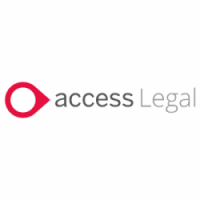 By Legal Futures Associate Access Legal
By Legal Futures Associate Access Legal
In today’s rapidly evolving digital landscape, providing your users with the right IT setup has never been more critical. As businesses grow and technology progresses, IT managers, CTOs, and Managing Partners face new challenges when it comes to managing their firm’s IT assets and providing an excellent digital employee experience while maintaining the highest levels of security and compliance.
What are managed devices?
Managed devices refer to how the “endpoints” that allow users to access your firm’s data and systems to do their work are supplied, monitored, and managed. This covers everything from laptops to mobiles and everything connected to your internal network and other external systems.
It covers more than the supply of IT equipment—it includes how those devices are set up and configured to ensure that users can access the data they need while adhering to access and security policies set at an organisational level.
Components of a managed device solution
Managed device solutions refer to services and technologies that enable businesses to procure, manage, monitor, and secure their devices, including laptops, monitors, desktops, and accessories.
There are several levels of device management available in the market:
- Device lease or purchase only, with no additional service or support other than warranty cover
- Device lease and configuration, where devices are supplied and can be configured to set up user profiles the first time they log in
- Device lease, configuration, and support, where the devices are supplied, configured to users profiles, and continuously monitored and managed (i.e. patched and updated) for the duration of your contract term
Additional services can include extended warranties, accidental damage cover, automatic upgrades at the end of the contract term, and user service desk support.
How a managed device solution can benefit your firm
- Enhanced Security and Compliance: Managed Device Solutions are paramount in safeguarding sensitive data and ensuring adherence to industry regulations. By enforcing strict security policies and providing real-time monitoring, these solutions help mitigate the risk of data breaches and unauthorised access.
- Streamlining Device Management: Centralised device management simplifies administrative tasks, reducing the burden on IT teams. This streamlined approach efficiently handles device configuration, updates, and troubleshooting, leading to smoother operations.
- Reduce Operational Costs: Managed device solutions help lower operational costs by automating routine maintenance tasks and reducing the need for manual interventions. Businesses can reallocate resources to more strategic initiatives, driving overall growth and productivity.
- Increase Productivity: Reduced downtime and more efficient device performance allow employees to focus on their core tasks. Managed device solutions ensure that devices are always up-to-date and functioning optimally, contributing to a more productive work environment.
Considering a managed device solution? Here’s what you need to know
- Conducting a needs assessment
Before implementing a managed device solution, conducting a thorough needs assessment is crucial. This involves evaluating your current IT infrastructure, understanding your business’s requirements, and identifying the key pain points that must be addressed. A detailed assessment will help you determine the solution’s scope, the types of devices required, and the necessary features and functions.
- Planning and strategising deployment
A carefully considered deployment plan is crucial for a successful implementation. Develop a detailed strategy outlining the deployment timeline, resource allocation, and potential challenges. Engage key stakeholders and ensure everyone is informed and prepared for the transition. Ideally, the plan should outline,
- Timeline – define clear milestones and deadlines for each stage
- Resource allocation – identify necessary resources, including personnel, budget and technology
- Communication strategy – ensure transparent communication throughout the process
- Long-term business objectives – can you align the managed device strategy with the long-term strategy of the firm
Choose the right solution
Selecting the appropriate managed device solution is fundamental to successful implementation. Consider the following factors when choosing a solution:
- Scalability: Ensure the solution can grow with your organisation.
- Compatibility: Verify that it supports all your organisation’s devices and operating systems.
- Security: Look for robust security features, including encryption, access controls, and threat detection.
- Usability: Choose a user-friendly solution that offers a seamless experience for both IT staff and end-users.
- Support: Opt for a solution with solid support and comprehensive documentation.
Prioritise security
Security should be at the forefront of your managed device solution implementation. Implement the following security measures:
- Data Encryption: Protect sensitive data both in transit and at rest.
- Access Controls: Restrict access to devices and data based on user roles and responsibilities.
- Regular Updates: Keep all devices and software up to date with the latest security patches and updates.
- Monitoring and Alerts: Set up continuous monitoring and alert systems to promptly detect and respond to potential threats.
Provide comprehensive training and support
To be effective, end-users and IT staff must be adequately trained for a managed device solution. Develop a comprehensive training program that covers:
- System Usage: Teach users how to use the managed device solution effectively.
- Security Protocols: Educate users on best practices for maintaining device security.
- Troubleshooting: Equip IT staff with the knowledge to troubleshoot common issues. In addition, ensure ongoing support is available to address any questions or concerns that may arise post-implementation.
Monitor and optimise
Implementing a managed device solution is not a one-time event but an ongoing process. Regularly monitor the solution’s performance and gather user feedback to identify improvement areas. Use analytics and reporting tools to gain insights into device usage, security incidents, and operational efficiency. Continuously optimise the solution based on these insights to ensure it meets your business’s evolving needs.
Conclusion
Implementing Access Managed Device solutions is a strategic move that can significantly enhance your law firm’s efficiency, security, and productivity. By following these best practices, you can ensure a smooth and successful deployment, positioning your business for long-term success.
Ready to take the next step? Contact one of our experts to learn how our managed device solutions can transform your law firm.










